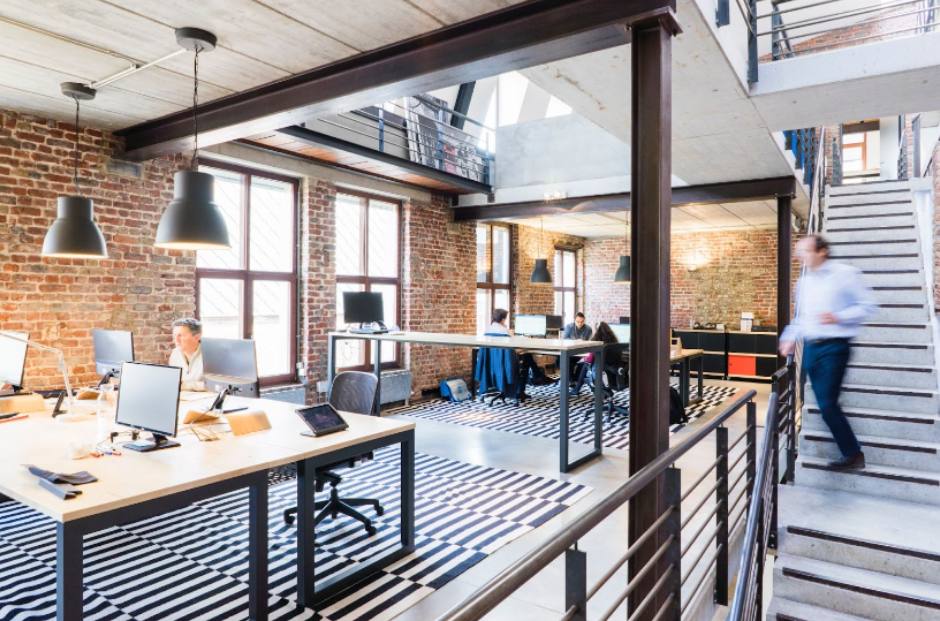The search for more pleasant and motivating work environments has led companies to adopt a new position: the Director of Happiness, also known as Chief Happiness Officer (CHO). This role, which is gaining traction in companies in Brazil and around the world, has as its main objective to promote the well-being and happiness of employees in the corporate setting. In this article, we will explore the relevance of this new role, highlighting the case of Heineken, and discuss how corporate architecture can be adapted to accommodate this trend, providing a physical environment that contributes to increasing the level of happiness at work.
The Emergence of the Chief Happiness Officer and How Large Companies are Reaping the Benefits

In recent years, companies have recognized the importance of investing in employee well-being and happiness as a means to increase productivity, talent retention, and job satisfaction. The role of Chief Happiness Officer has emerged in response to this need. One company that stands out in this aspect is Heineken, which was a pioneer in creating the CHO position. Heineken believes that happy and engaged employees are more creative, productive, and contribute to a positive work environment.
In the case of Google, the implementation of the Chief Happiness Officer role has shown significant results. Based on the data released, the company witnessed a 37% increase in employee satisfaction after the creation of this position. The Google Chief Happiness Officer was responsible for developing initiatives that promote work-life balance, as well as well-being and emotional support programs. These measures contributed to a more harmonious and productive work environment.
At Zappos, one of the world’s largest online retailers, the Chief Happiness Officer plays a fundamental role in creating a positive organizational culture. The company is known for its innovative management practices and its focus on employee appreciation. The company experienced a 13% increase in sales and a 75% reduction in employee turnover rates after implementing the CHO role.
Airbnb also adopted the Chief Happiness Officer position to strengthen its people-centric culture. The company observed a 22% increase in employee satisfaction following the creation of this role. The Airbnb Chief Happiness Officer is responsible for developing programs that promote inclusion, recognition, and employee well-being. These initiatives have contributed to a more collaborative and engaged work environment, positively impacting the employee experience.
The role of the Chief Happiness Officer challenges the traditional view that happiness is solely the individual’s responsibility. It recognizes that the work environment plays a crucial role in employee well-being. Research shows that happy employees are more motivated, have a greater sense of purpose, and are more willing to collaborate and innovate. Moreover, companies with high employee satisfaction levels demonstrate better financial results and higher talent retention rates.
Impact of the Chief Happiness Officer on Corporate Architecture
The Chief Happiness Officer has a significant impact on how corporate offices are designed. The physical spaces should be thoughtfully designed to promote the well-being and happiness of employees.
The expertise of the CHO in fostering a positive and healthy work environment can provide valuable insights to architects during the conception and design process of corporate spaces. By working together, the Chief Happiness Officer and architects can identify the specific needs of employees in terms of comfort, health, emotional well-being, and social interaction.
Through this collaboration, architects can integrate architectural elements that promote happiness and well-being in the workplace. This can include creating cozy and functional social spaces, maximizing natural light entry, incorporating green areas, optimizing acoustics, selecting colors and materials that stimulate positive emotions, among other relevant aspects.
Additionally, the Chief Happiness Officer can provide information about the latest research and trends related to well-being and job satisfaction. These insights can guide architects in making more informed decisions, enabling the creation of spaces that meet the physical and psychological needs of employees.
Promoting Happiness through Corporate Architecture

Cozy Social Spaces: Creating cozy and pleasant social spaces is essential for promoting interaction and socialization among employees. Areas with comfortable sofas, coffee tables, and green spaces can provide a relaxed environment conducive to rest, creative breaks, and informal interactions.
Natural Lighting and Adequate Ventilation: Natural light and proper ventilation are essential factors for employee well-being. When designing offices, it is important to maximize natural light entry, providing a more pleasant and healthy atmosphere. Additionally, adequate ventilation contributes to a more comfortable and productive environment.
Inspiring Colors and Elements: The choice of inspiring colors and elements can have a positive impact on the mood and creativity of employees. Bright and vibrant colors, artwork, murals, and plants can bring life and energy to the corporate environment, contributing to a more positive and stimulating atmosphere.
Concentration and Privacy Spaces: While interaction is important, it is also crucial to provide spaces for concentration and privacy for tasks that require more focus. Smaller meeting rooms, acoustic booths, and individual workspaces can be incorporated into the design, allowing employees to find a balance between collaboration and concentration.
Well-being Infrastructure: Investing in infrastructure that promotes employee well-being is an effective way to elevate the level of happiness at work. Spaces for physical exercise, meditation or relaxation areas, and even nap spaces can be considered in corporate architecture, providing moments of self-care and stress reduction.
Trends in Happiness Design around the World
Singapore

Green Spaces and Integrated Nature
Singapore is known for its innovations in urban design and sustainability. In the context of corporate offices, a growing trend is the incorporation of green spaces and integrated nature. The introduction of vertical gardens, indoor vegetation areas, and even outdoor spaces provides a sense of tranquility and connection with nature, promoting relaxation and creativity among employees. Moreover, studies show that the presence of plants in work environments improves air quality and reduces employee stress.
Berlin

Flexible and Collaborative Spaces
Berlin is a city known for its creative and progressive culture. In the design of corporate offices, a rising trend is the creation of flexible and collaborative spaces. Shared offices, modular meeting rooms, and flexible work areas allow employees to choose the most suitable environment for their needs and encourage collaboration and idea exchange. This approach provides greater freedom of movement and flexibility for employees, contributing to a more dynamic and inspiring environment.
New York

Employee Wellness
New York is a city that values employee well-being and health. The trend of designing corporate offices with a focus on wellness encompasses everything from proper ergonomics and lighting to dedicated spaces for physical and mental health. On-site gyms, relaxation areas with meditation and yoga, restrooms, and even nap spaces are becoming increasingly common. Additionally, the introduction of wellness programs such as mindfulness classes and health lectures contributes to employee engagement and satisfaction.
Tips for implementing Happiness Design trends in your project
Analyze the needs of the company and employees: Before implementing any trend, it is important to understand the specific needs of the company and employees. Conduct research and interviews to identify preferences and expectations, ensuring that the changes align with the organizational culture and company goals.
Create multifunctional spaces: To promote flexibility and collaboration, designing multifunctional spaces is essential. Modular furniture, movable partitions, and versatile areas can easily adapt to different activities, allowing employees to personalize the workspace according to their needs.
Invest in technology and connectivity: Technology plays a crucial role in creating modern and functional spaces. Ensure that the offices are equipped with technologies that facilitate collaboration, such as video conferencing, file sharing, and internal communication platforms.
Prioritize air quality and lighting: Environments with good air quality and adequate lighting are essential for employee well-being. Integrate efficient ventilation systems, maximize natural light entry, and invest in high-quality artificial lighting, ensuring that the spaces are healthy and stimulating.
Conclusion
The Chief Happiness Officer role is transforming the architecture of corporate offices, driving employee well-being and satisfaction. By exploring these trends, architects have the opportunity to draw inspiration and innovate in their designs, creating spaces that promote happiness, engagement, and productivity among employees. By incorporating elements such as green spaces, flexibility, wellness, and connectivity, corporate offices become more pleasant, stimulating, and conducive to organizational success. The integration of Happiness Design principles not only benefits the employees but also contributes to a positive and thriving work culture.





